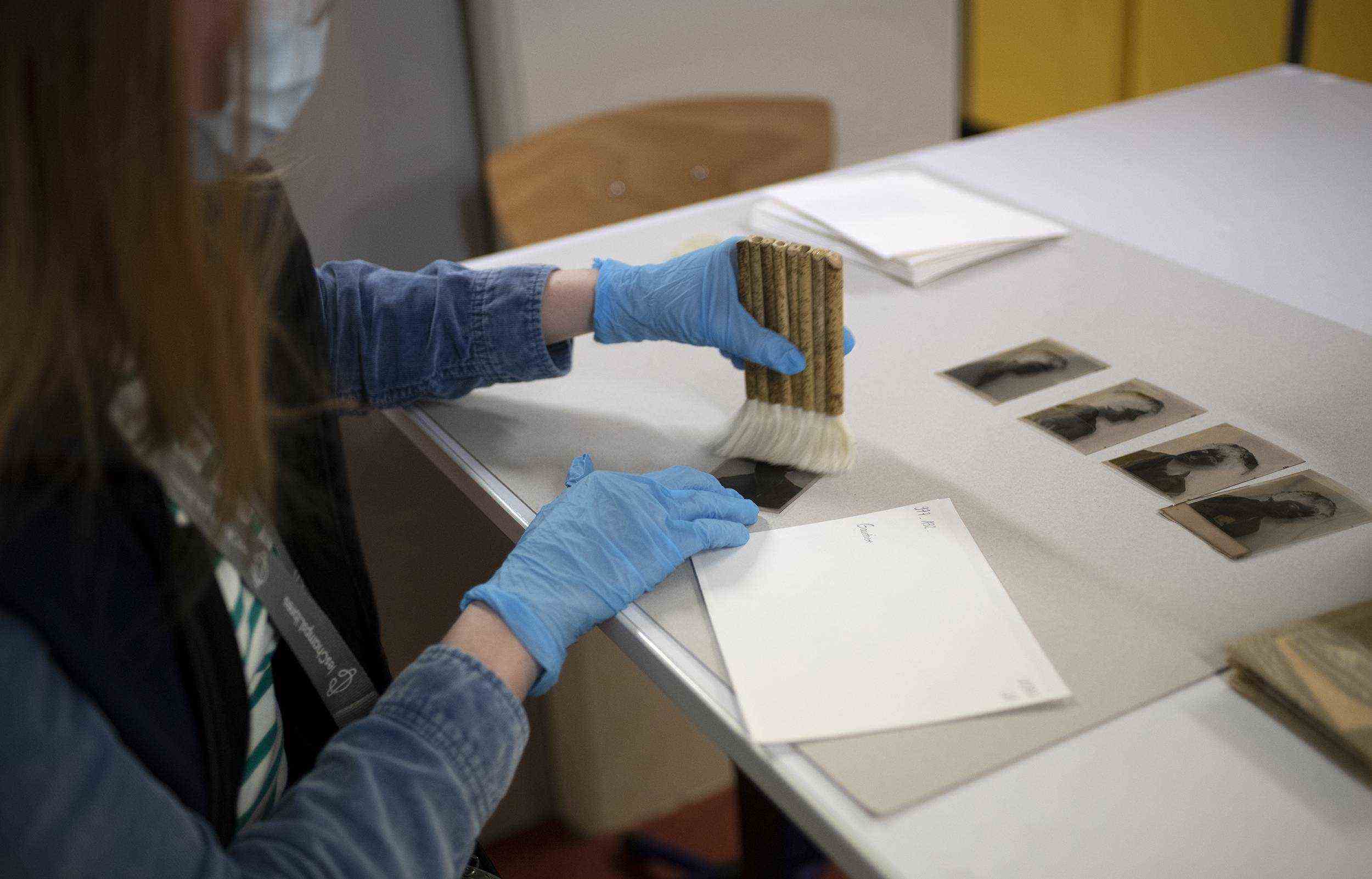The digitization project of the Musée de Bretagne’s photographic collection will last six years. – J. Gicquel / 20 Minutes
- In Rennes, the Musée de Bretagne has just started the digitization project of its imposing photographic collection.
- The museum has more than 500,000 photos dating from the late 19th century to the 1980s.
- Once digitized, all these fragments of Breton history will be put online on a portal with the possibility for the public to download them free of charge.
Photos of birth, communion or marriage. Family reunions and even a portrait of a dog immortalized in a studio. Elodie Moïsa holds in her hands pieces of the intimacy of many Breton families. Like her, five other archival historians are working in the basements of the Museum of Brittany to dust off all these fragments of history.
Since February, the museum, located in the Champs Libres in Rennes, has embarked on a vast project that will last six years to digitize and save its impressive photographic collection, which contains more than 500,000 references. “The oldest photos date from the end of the 19th century and the most recent from the 1980s,” says Manon Six, heritage curator and head of collections at the Musée de Bretagne.
Some photos never saw the light
They are for many the fruit of an acquisition policy instilled in the 1970s by the former director Jean-Yves Veillard “to preserve the memory of all these Breton photographic studios”. The photographic collection, the most important in Brittany, has also been enriched over the years during public sales or thanks to donations from individuals or finds in cellars or attics. “Some have never gone out of their box and have never seen the light,” underlines Manon Six.

Many also blame the weight of years and there is therefore an urgent need to digitize them to preserve them and keep a record of them. This meticulous work has been entrusted to the Bordeaux company Arkhênum who dispatched six archival historians to the site. All day long, the teams dust off these prints on paper. There are also many negatives, on glass plates or on cellulose nitrate supports, the most damaged being stored in freezers.
The photos can be downloaded for free on a portal
Once the grooming of the photos is finished, they must be assigned an inventory number and a description before repackaging them. The photos will then take the direction of Châtillon in the Paris region to be digitized within the Tribvn company. It is only after all these steps that the photos will join the digital portal “Shared collections” launched by the museum in 2017 and which already has more than 300,000 works and documents.
Operating with Creative Commons licenses, the portal allows all Internet users to access the museum’s rich collection and download thousands of photos or posters in high definition free of charge. “This radically transforms our professions, but it is a way of reaching as many people as possible and reaching audiences who will not necessarily push the doors of the museum,” says Manon Six.
Posters for the reopening
Closed for nearly seven months, the Musée de Bretagne finally reopened its doors to the public on Tuesday. In addition to the permanent route, visitors will be able to discover the exhibition “Facing the wall: The graphic design engaged from 1970 to 1990” which bears witness to the political messages conveyed by the posters during these years. The reopening also marks the start of the “Western” exhibition by photographer Stéphane Lavoué, a fan of photographic road trips in the region. These two exhibitions will be visible until the fall.

